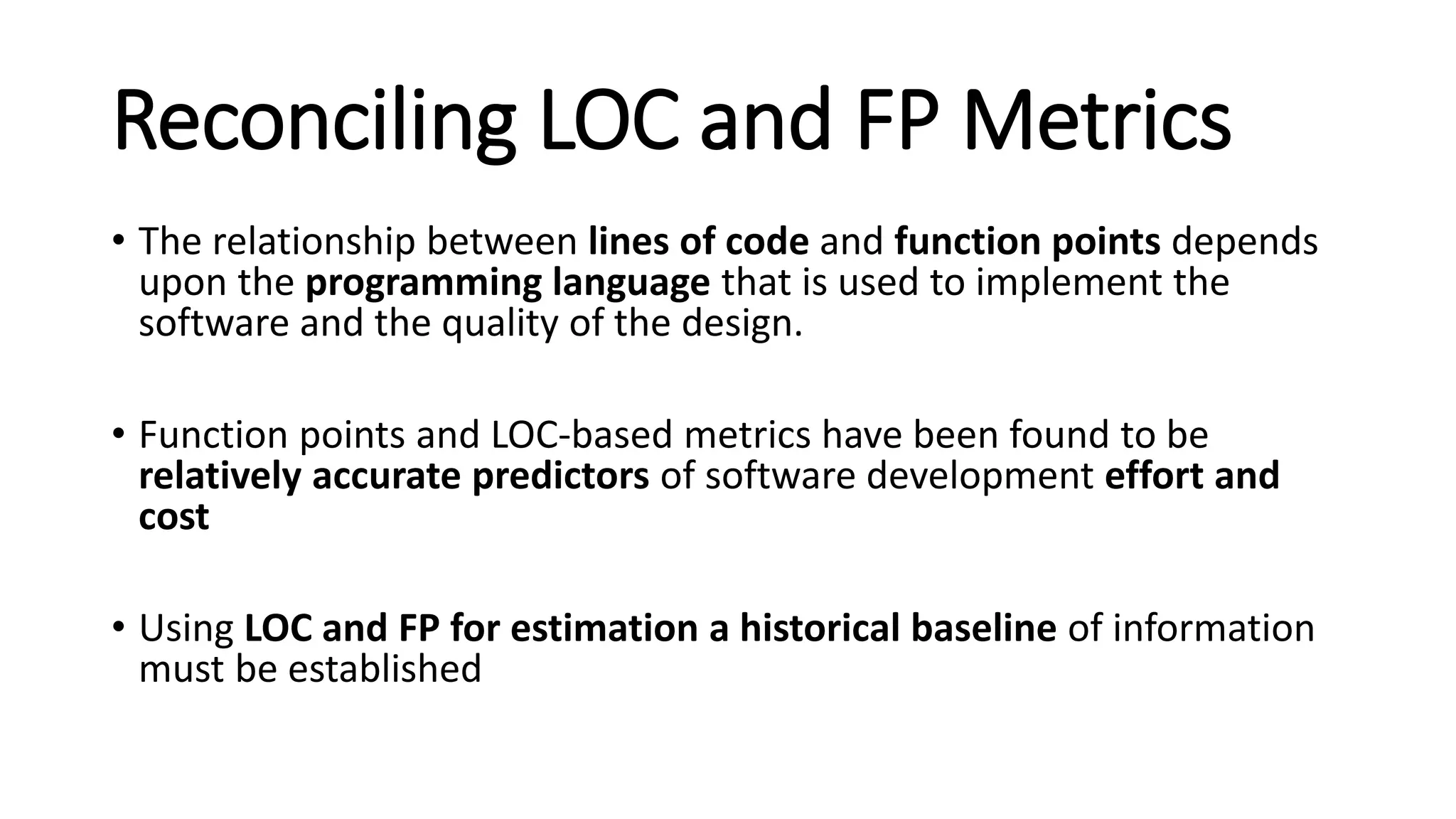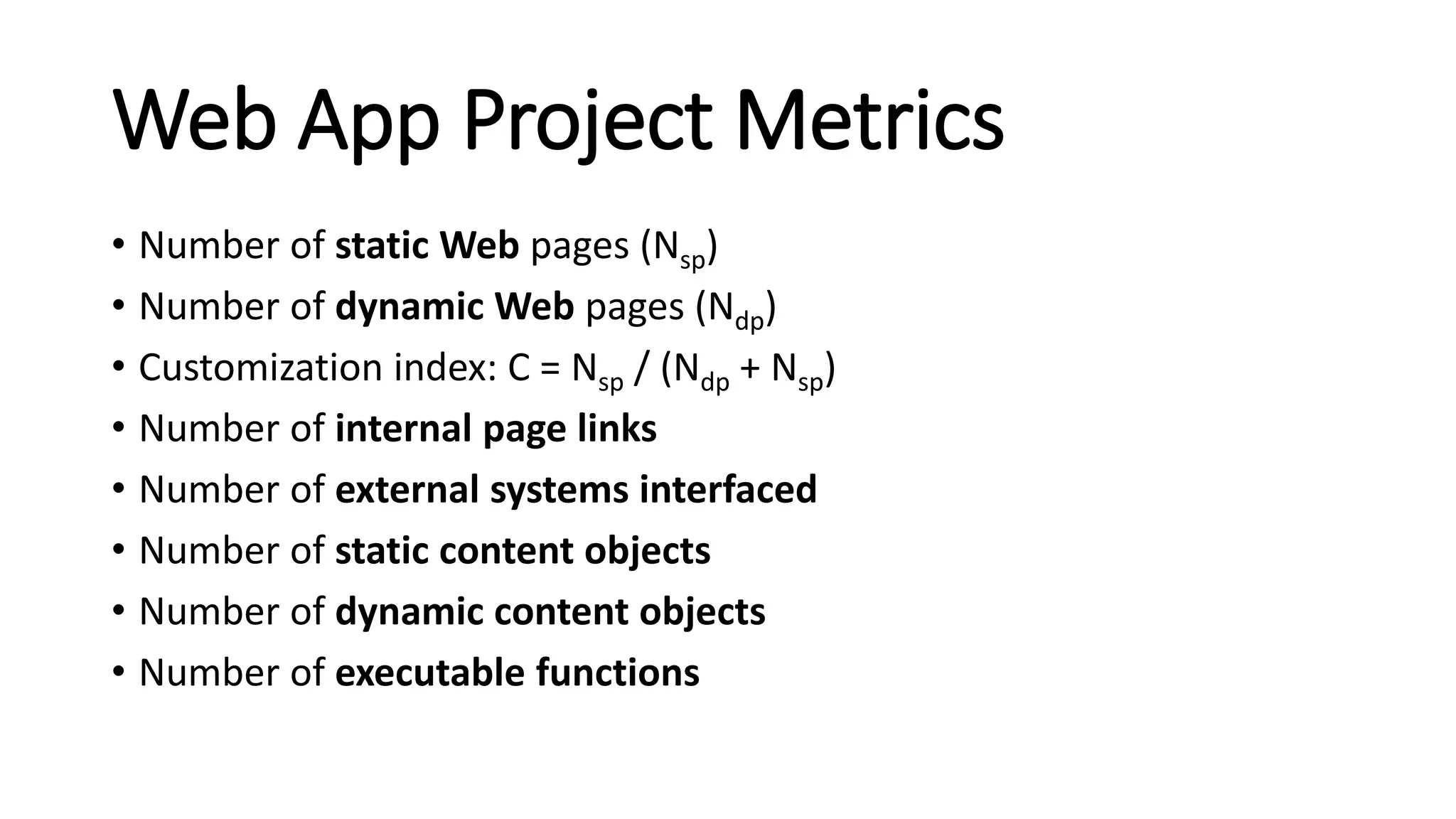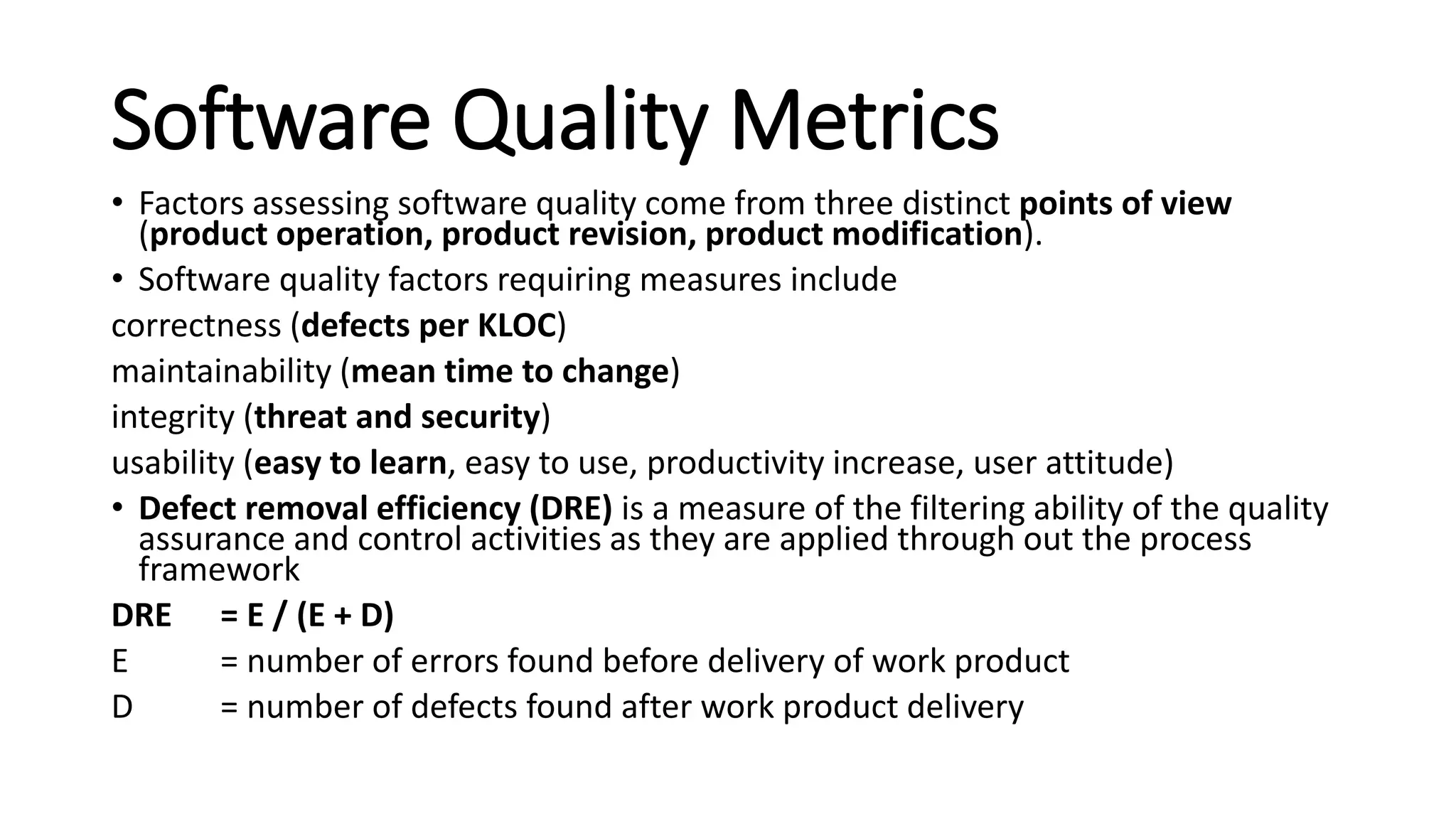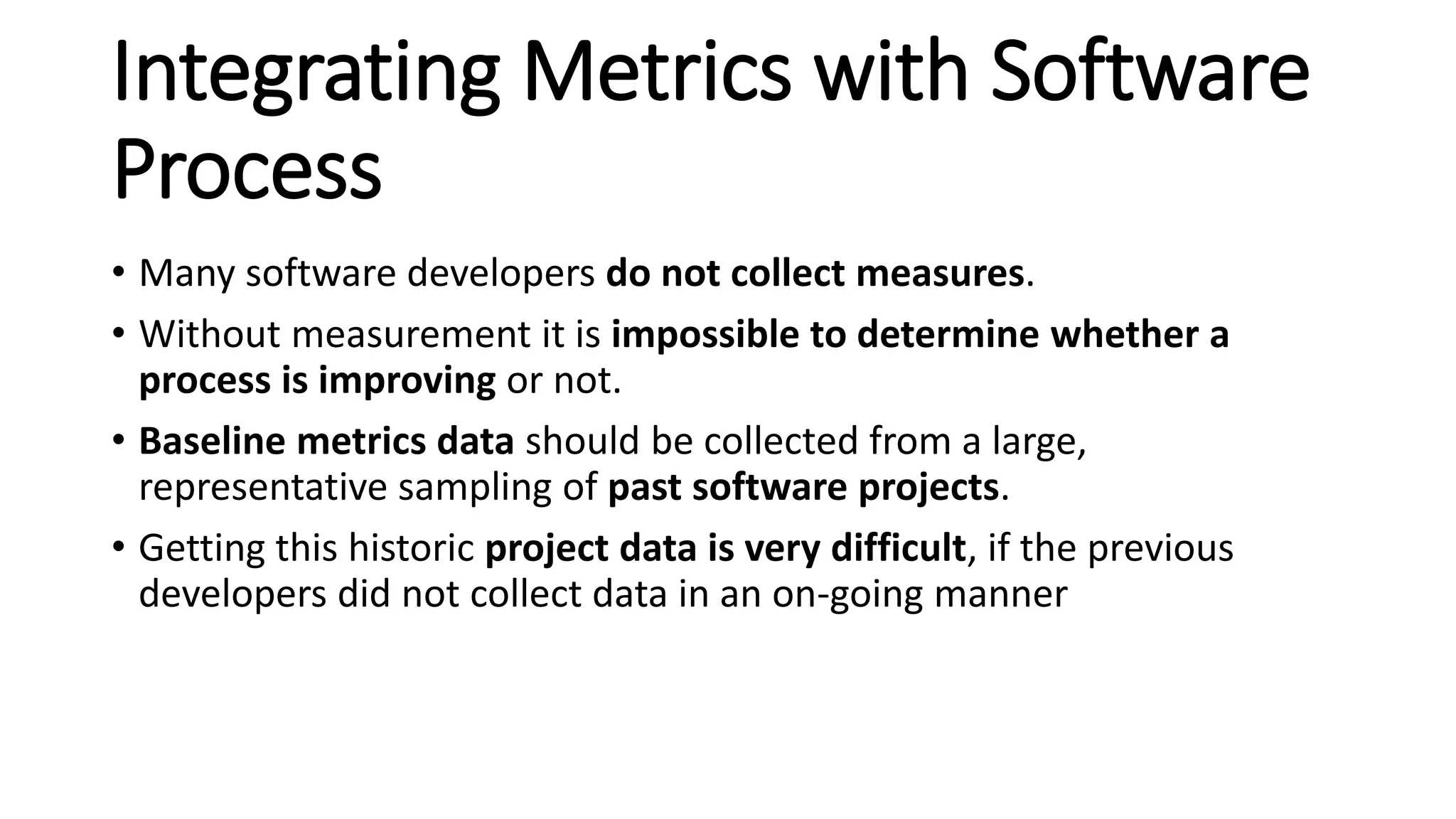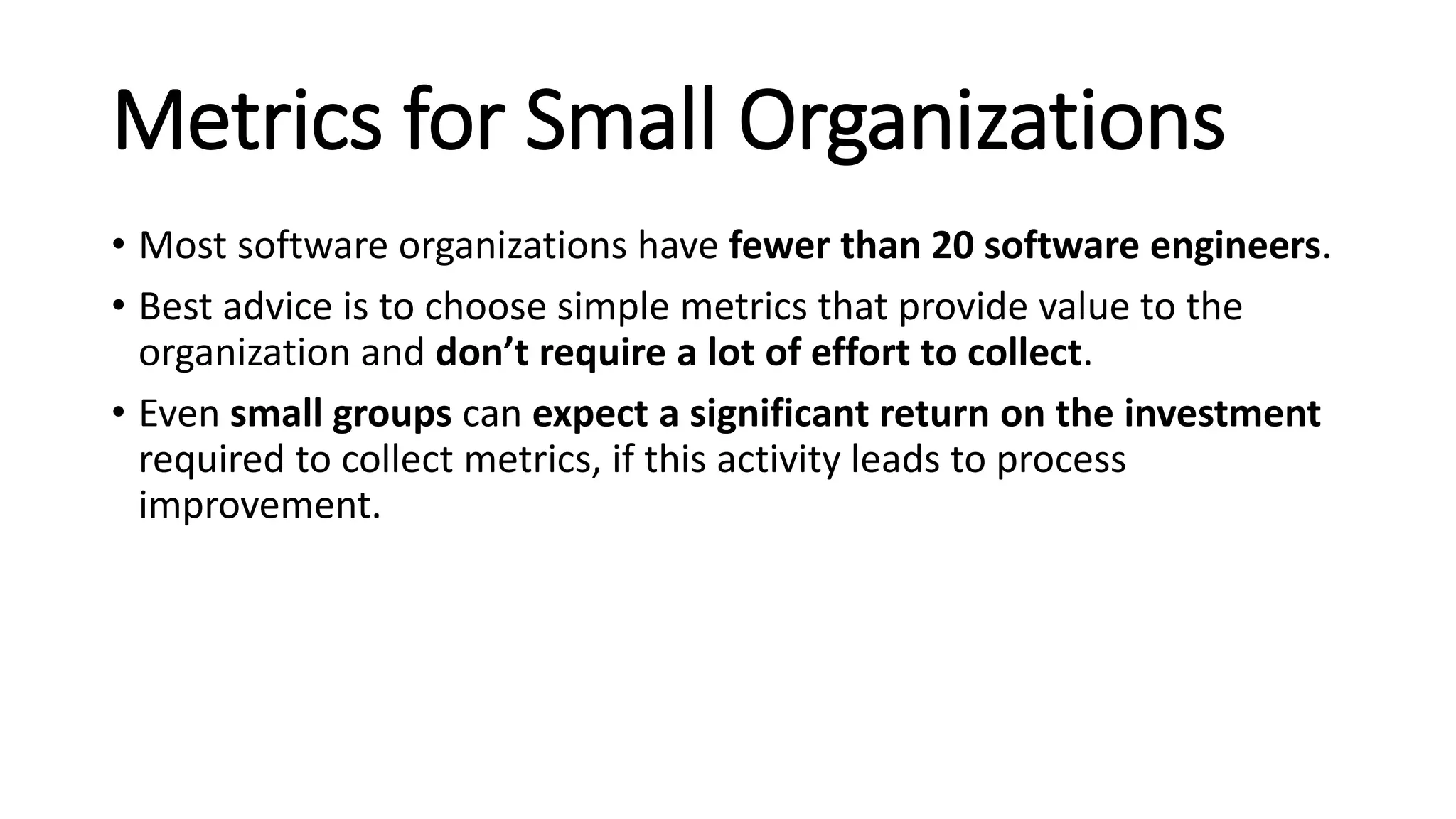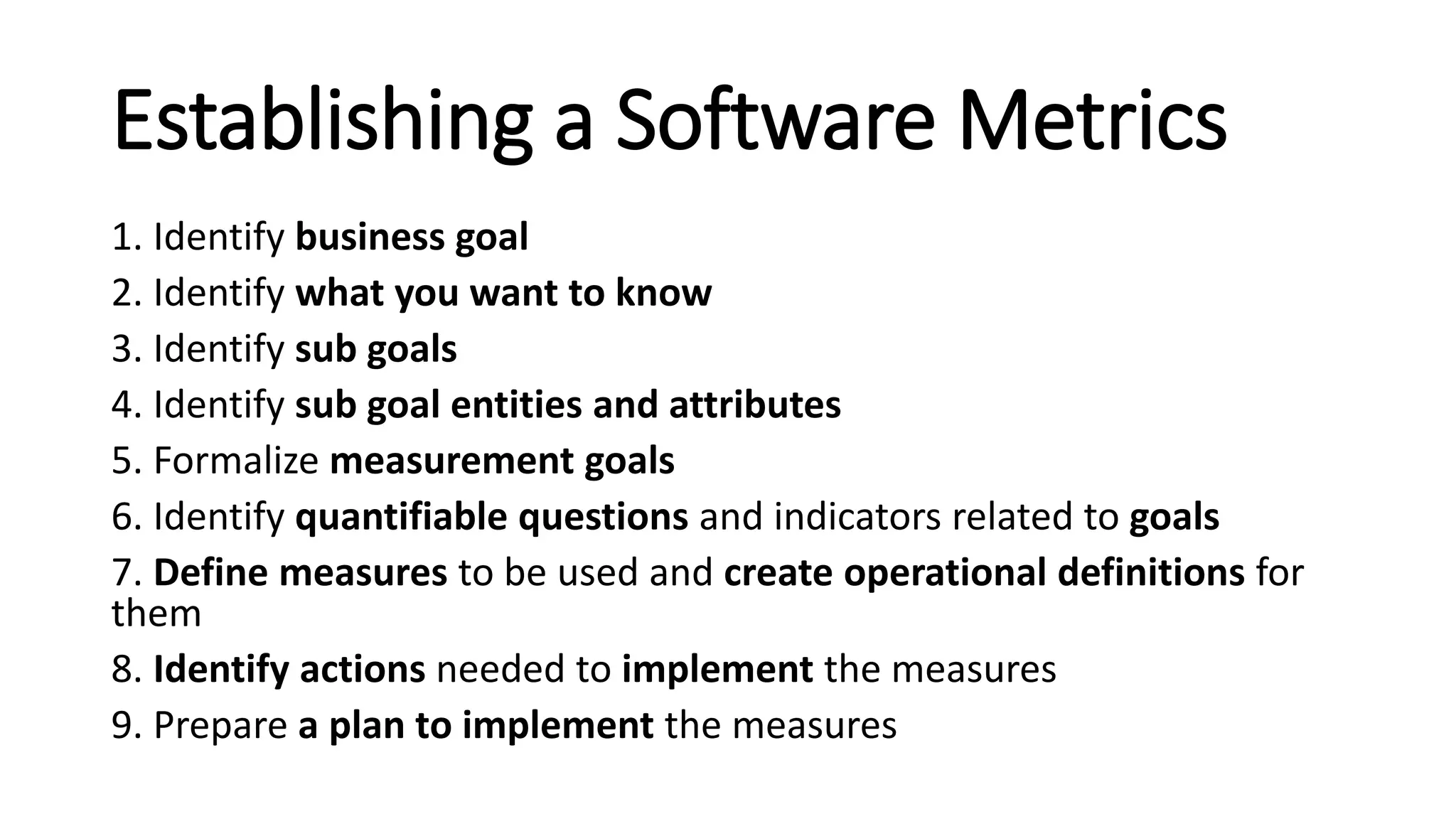The document discusses various software metrics including lines of code and function points as predictors of development effort and cost, emphasizing the importance of historical baseline data. It outlines metrics for object-oriented and web applications, alongside software quality measures such as correctness and maintainability. Furthermore, it highlights the necessity of integrating metrics into software processes to foster improvement and establish project baselines, particularly for small organizations.

